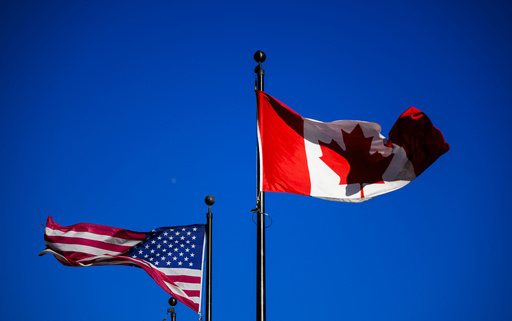PALM BEACH, Fla. — In a sudden move, President Donald Trump has launched a series of executive orders that have sent shockwaves through the global economy and complicated his intent to manage inflation. His new tariffs on Canada and Mexico are part of a strategy aimed at stemming illegal immigration and combating the fentanyl crisis but have sparked retaliatory measures from both neighboring countries, escalating trade tensions. Furthermore, Trump has imposed a supplemental 10% tariff on imports from China under the same pretext of curbing fentanyl production.
On a broader scale, Trump’s actions have introduced significant tax hikes that could accumulate to over $1 trillion within a decade without congressional consent. Acknowledging the potential consequences, he has warned of “some pain,” which may include increased inflation, job losses, and slower economic growth.
To understand these developments, it’s essential to explore the foundation of Trump’s executive orders. The primary legal framework he utilized is the International Emergency Economic Powers Act of 1977, which allows the President to declare economic emergencies and impose tariffs in response to “unusual and extraordinary” threats outside the United States. This act has been invoked in various scenarios, such as the Iran hostage crisis and actions against human rights violations in Venezuela.
The tariffs introduced are set to take effect shortly, with a 25% increase on imports from Canada, alongside a reduced 10% tax on energy products, such as oil and natural gas. The aim of lowering energy tariffs is to minimize the impacts on U.S. consumers, while a similar 25% tax will be applied to Mexican imports, and a 10% tax on goods from China. Contrary to Trump’s assertion that foreign entities will bear the cost, these tariffs effectively function as domestic tax increases, impacting American consumers and businesses directly.
Trump justifies these tariffs as necessary measures against illegal immigration and drug trafficking, although critics question his rationale. Official U.S. reports indicate a decline in unauthorized crossings from Mexico, and the quantity of fentanyl seized at the northern border remains relatively low. Nevertheless, Trump’s orders claims that collaboration between drug traffickers and the Mexican government poses a threat to U.S. national security, calling for decisive action to dismantle criminal networks. His directives concerning China highlight their role as a sanctuary for organizations involved in the illegal fentanyl trade.
There remains a possibility for the tariffs to be heightened further, as the executive orders allow the president to respond to counteractions from Canada and Mexico, who are prepared to retaliate with their own tariffs on U.S. products. Any escalation would be at Trump’s discretion and wouldn’t automatically trigger an increase.
Another notable aspect of the orders is a change concerning the “de minimus” exemption, which previously exempted imported goods valued under $800 from tariffs. With the new orders, this exemption will no longer apply for products coming from Canada, Mexico, and China, meaning consumers will now face taxes on lower-value imports as well.
As for congressional influence, halting the tariffs would require new legislation that Trump would need to accept, a scenario that seems unlikely given his current stance. Nevertheless, Congress retains oversight through a requirement for the Department of Homeland Security to provide regular updates to Congress about the national emergency alongside the tariff enforcement.
Finally, while there are no specific conditions outlined for lifting these tariffs, a senior official hinted that a decline in fentanyl-related fatalities might serve as a potential criterion. Ultimately, the decision to revoke these tariffs will rest with Trump, who will be briefed on whether adequate steps have been made to address the identified emergencies through consultations with various agencies, led by the Secretary of Homeland Security.




